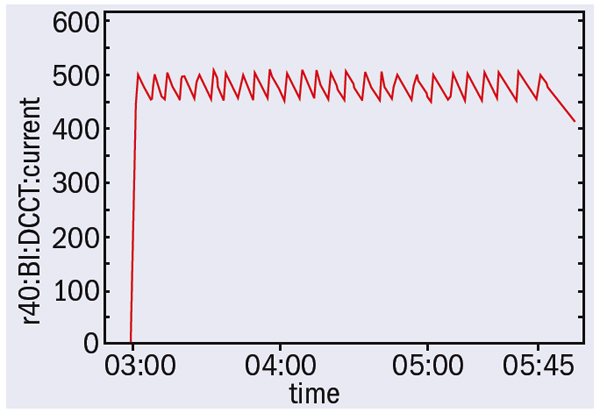The first phase of commissioning BEPCII, the major upgrade of the Beijing Electron–Positron Collider (BEPC) came to a successful conclusion on 3 August, when the beam current reached 500 mA at 1.89 GeV. On the same day the researchers also completed mapping the combined magnetic field of the superconducting insertion magnets (SCQs) and the superconducting solenoid of the detector BESIII. This followed a series of studies that included the first collisions between beams in the electron and positron rings. The successful commissioning of the superconducting magnets and the cryogenics demonstrated that both systems were stable and up to design performance.

BEPCII consists of two storage rings, with a new ring built inside the original BEPC ring at the Institute of High Energy Physics, Beijing. The installation of all of the storage ring components, except for the SCQs, finished in early November 2006. Phase I commissioning, based on the conventional magnets in the interaction region, started on 13 November and the first electron beam was stored in the outer ring on 18 November. The ring provided beams to the users of the Beijing synchrotron radiation facility for more than a month, from 25 December.

Commissioning both the electron and positron rings began in February 2007, and the first beam–beam collision occurred on 25 March. Optimization of the beam parameters followed, and on 14 May collisions occurred between beams of 100 mA each and 20 bunches per beam. The luminosity estimated from the measured beam–beam parameters reached a level comparable to that of the original BEPC, i.e. 1031 cm–2s–1 at the beam energy of 1.89 GeV. A second round of synchrotron radiation (SR) operation followed from 15 June to 31 July, with a beam current of about 200 mA and a lifetime of 6–7 hours. A slow orbit correction led to orbit ripples of less than 10 μm (figure 1).

Machine studies immediately followed the SR operation. With a bias-voltage applied to the radio-frequency coupler, the power provided by the superconducting cavity exceeded 100 kW and the beam current reached the design value of 250 mA at 2.5 GeV in SR mode. At the same time the beam current reached a stable 500 mA at 1.89 GeV without feedback (figure 2). The smooth commissioning demonstrated the good performance of the BEPCII hardware.
The construction of the BESIII detector has been smoothly progressing simultaneously. The assembly and testing of most of the sub-detectors, including the electromagnetic calorimeter barrel (CsI crystals) and the drift chamber, are now finished and ready for integration in BESIII.
After the Phase I commissioning, BEPCII shut down until the end of September for maintenance and the installation of the new interaction region components. Commissioning will resume in early October with the SCQs – and BESIII should be ready to be transported into the interaction region in the spring next year.







